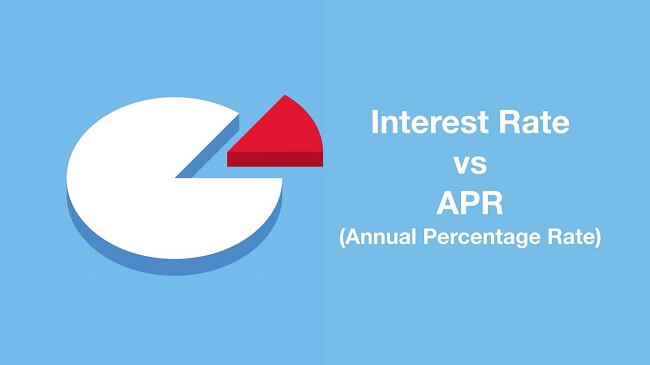When it comes to loans, most people are only aware of interest rates applied to the principal amount. That is why they get confused upon the mention of APR. However, you must learn about both of these concepts and know the difference between them to find the best loan option for your requirements.
To help you out, we have brought here a simple-to-understand contrast between the interest rate and Annual Percentage Rate (APR) of a loan. So you won't have any doubts about which one to pick.
Let's begin with the differences!
Interest Rates
Every
lender charges you a nominal additional amount on the borrowed funds. This is
called the interest rate. It is a pre-determined percentage that gets added to
the principal amount. For example, if you borrow a loan of $100,000 with an
interest rate of 8%, you will have to pay back $100,000 + $8,000 to the lender.
These rates are based on the Federal Reserve's federal funds rate. You will be informed of the exact interest rate percentage before you sign the application form. The only rule here is to find the lowest possible interest rates while looking for a reliable lender.
However, you may also get an opportunity to select between fixed and variable rates. In the fixed option, the percentage will remain the same throughout the tenure irrespective of market conditions. Contrastingly, variable interest rates keep on changing according to the markets. Hence, there are equal chances of the percentage going up or down. Both of these alternatives have their own benefits. You need to look into your individual requirements to check which one fits better for you.
APR
APR,
on the other hand, is a slightly different concept. It includes all the
additional charges associated with the loan and not just its interest rate.
This consists of several aspects, such as:
● Discount points
● Broker fees
● Rebates
Etc.
The APR percentage is always greater than or equal to the interest rate percentage because of the complete fee inclusion. As APR tells you about the overall expense on loan, it is a more significant factor for comparing multiple loans. You can easily see which option is cost-effective with the help of APR.
It may be possible for multiple lenders to offer the same interest rates but different APRs. You must have understood by now why this can happen. So you need to see which lender has a better APR and not just interest rates.
The only drawback with this rate is when you opt for a variable rate loan. In that option, the interest rates change according to the market conditions. Thus, it is almost impossible to see the overall cost associated with the loan.
Read more Article: Working Capital Loan: Best Funding Option for Your Business
The Basic Difference
The
primary dissimilarity between the interest rate and APR is the types of costs
included in them. Where interest rates are only nominal charges, APR comprises
all the fees included with the loan. That is why you need to check both these
aspects to know the exact amount that will get added to the borrowed funds.
This way, you can conveniently choose the more beneficial loan.
In case you can't find the APR of your selected loan, you can simply ask the lender about it. They will provide you all the relevant information, which will help you compare different options. With this, you can also check whether you are eligible for the loan or not. Go through the lender's mortgage or personal loan eligibility criteria to know more about it.
Conclusion
Experts
recommend going through all the small and significant features of a loan so
that you can compare multiple options and choose the best one. Therefore, you
must look into both interest rates and APR to see which loan option is the most
beneficial one for you.

